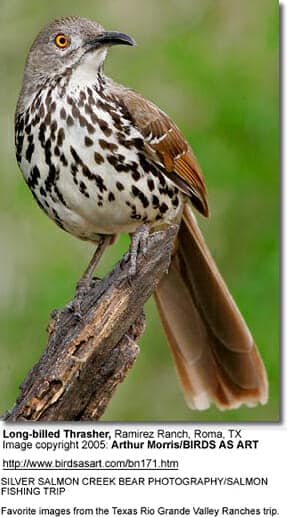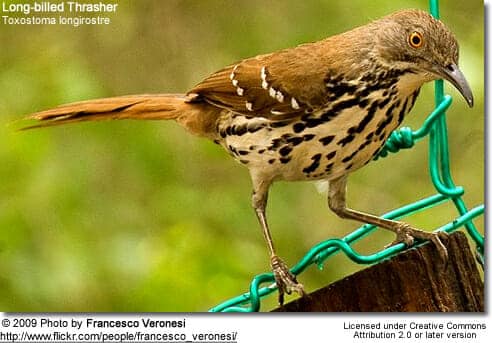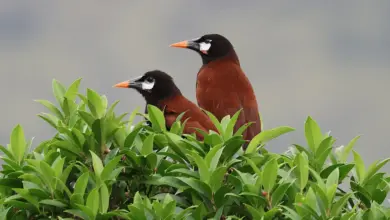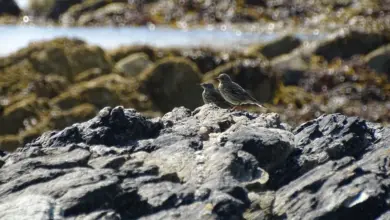Long-billed Thrashers
The Long-billed Thrashers (Toxostoma longirostre) is a medium-sized resident songbird of South Texas and eastern Mexico.
Description
It is slender and long-tailed, averaging 26.5–29 cm (10.5–11.5 in) in length[1] and about 70 g (2.5 oz) in weight.[2]
Adults are brown above with a brighter rufous tinge on the rump and tail, off-white below with a black streak on each side of the throat (the malar) and heavy black streaks on the breast and belly, especially the sides of the breast.
There are two pale wingbars. The head is grayish, especially the face. The bill is black, fairly long, and slightly down-curved, and the eyes are orange to orange-yellow.
Immatures resemble adults but have less distinct markings and buffier wingbars.


Song / Call
The song is warbling and resembles other thrashers‘ songs but is especially rich and musical, though occasionally scratchy. Phrases are often repeated two to four times.[1][2] A distinctive call is a “loud, rich whistle cleeooeep“[1] or “mellow, whistled tweeooip or ooeh“[2]; other calls include “a loud sharp chak” and “a very rapid, sharp rattle chtttr” resembling calls of its close relative the Brown Thrasher.
Distribution
This species is resident from South Texas through Tamaulipas and eastern Coahuila along the Atlantic slope of Mexico to central Veracruz. It occurs in brushy or thicketed habitats of all kinds.[1]
It usually stays hidden on or near the ground, though it may sing from conspicuous perches.[1] Its food is mostly insects and fruit[1]; it searches for insects on the ground by energetically turning over (“thrashing”) leaves and other litter.[2]

Nesting / Breeding
The nest is a bulky cup placed in thick low or mid-height vegetation and made of materials such as twigs and grasses. The female lays 2 to 5 eggs described as bluish-white with dense reddish-brown and gray speckles[1] or greenish-white with tiny, dense, “dingy brown” speckles.
Sub-species:
There are two subspecies:
- T. l. longirostre, brighter rufous above, from southeastern San Luis Potosí and northern Veracruz south, and
- T. l. senetti, grayer above, from northern Veracruz north.[1]
References
- BirdLife International (2004).Toxostoma longirostre. 2006 IUCN Red List of Threatened Species. IUCN 2006. Retrieved on 26 March 2007. Database entry includes justification for why this species is of least concern
- Howell, Steve N. G.; Webb, Sophie (1995). A Guide to the Birds of Mexico and Northern Central America. Oxford University Press, p. 600. ISBN 0-19-854012-4.
- Sibley, David Allen (2000). The Sibley Guide to Birds. Alfred Knopf, p. 412. ISBN 0-679-45122-6.
- Long-billed Thrasher. All About Birds. The Cornell Lab of Ornithology. Retrieved on 2007-04-05. Includes sound recordings.
External links
- Long-billed Thrashers. The Birds of North America Online. The Cornell Lab of Ornithology and the American Ornithologists’ Union. Retrieved on 2007-04-5. Subscription required.
- Bird Info – Long-Billed Thrasher. World Birding Center. Retrieved on 2007-04-05. Includes sound recording and Texas range map.





